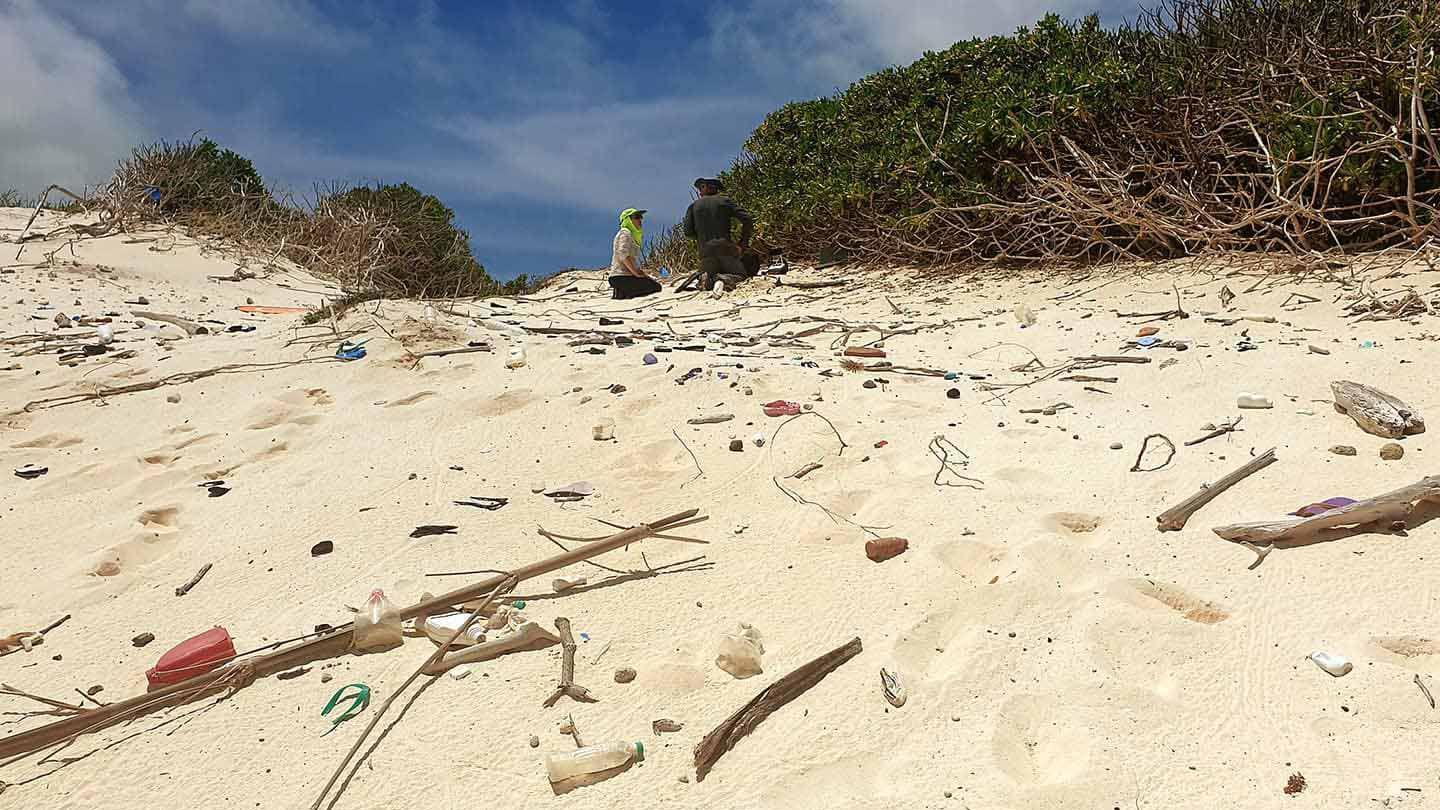The satellites spotting plastic waste from space

- Published
The world produces million of tonnes of plastic waste every year.
Of that waste, conservation group the International Union for Conservation of Nature (IUCN) says about 20 million tonnes of it ends up in the environment, including our oceans.
But one piece of tech is hoping to help in the race to clean up our planet.
Scientists from Australia have successfully used satellites to track plastic waste with a new method that can tell the difference between sand, water and plastic.
More on the plastic problem
- Published18 May 2023
The yellow spot shows the plastic on a beach that looks pretty clean on a normal satellite image from space
Satellites are already used to track plastic waste but this tool produced by scientists at the Royal Melbourne Institute of Technology (RMIT) picks up the differences in how sand, water and plastics reflect light.
They use a mathematical formula called the Beached Plastic Debris Index (BPDI).
That's how plastics can be spotted on an otherwise clean-looking beach like in the image above.
The team of researchers tested it by placing 14 plastic targets on a beach in southern Gippsland, Victoria, of all different sizes and types and the tech was able to identify them.
It means teams will be able to find and clean-up plastic waste more easily.
Guide: Why is plastic a problem?
The next step in the research is to test how well the BPDI does in real-life scenarios.
Study lead author, Dr Jenna Guffogg said: 鈥淧lastics can be mistaken for food, larger animals become entangled and smaller ones, like hermit crabs, become trapped inside items such as plastic containers."
She added that remote island beaches have some of the highest levels of plastics in the world, and those volumes are going up.
鈥淲hile the impacts of these ocean plastics on the environment, fishing and tourism are well documented, methods for measuring the exact scale of the issue or targeting clean-up operations... have been held back by technological limitations."
She hopes her teams new tool can help fix that
More like this
- Published10 January
- Published30 April
